Meet the avant-gardists of Saudi rock 'n’ roll
One of Sound of Ruby’s latest releases: “Lying to My Psychiatrist,” designed by Abdullah AlJahdhami. Courtesy of the band.
Today, there is an increasingly growing community of passionate Saudi rock artists and enthusiasts, young and old, who create and share beautiful and original works with their audiences, in music-focused spaces that serve as important platforms for them to express themselves and form meaningful and supportive connections.
In the Eastern Province of Saudi Arabia, there is Bohemia Art Café which has become a popular, cozy spot for fans of rock (as well as other various music genres), where they can attend shows performed by talented local bands and artists, buy their favorite vinyl records, or simply chat with other like-minded individuals about the music they love.
There’s also Sharqiya Musicians, a platform dedicated to developing and growing the music community in the Eastern Province.
Many local music enthusiasts are familiar with up-and-coming bands and artists such as Jwa, SHFQ, Zamzam, and so many others.
You may be surprised to learn that the rock scene in Saudi isn’t a recent thing. It came to be, quietly but bravely, many decades ago. In the 1990s, for instance, one of the earliest bands to rock 'n’ roll in the Kingdom was Sound of Ruby.
The Ithraeyat Editorial Team is pleased to present you with the inspiring story of this Dammam-based band, including their early learning journey, artistic inspiration, unique style of rock that brilliantly retains Arabic melodies, and many other fun details.
“The band did not come out of nowhere,” said Mohammed Al-Hajjaj, founder of Sound of Ruby and its lead singer, while speaking to the Ithraeyat team about how and why he established the band. “In my early teens, I found the sound of the guitar that I would hear while watching wrestling matches, listening to Michael Jackson, or watching movies, very appealing to me. I was really curious to learn what that sound was as well as learn how to play it.”
Al-Hajjaj fell in love with the guitar after watching music videos and concerts of bands like Nirvana, The Rolling Stones, and Aerosmith on TV. “My dad was very supportive of my growing passion for rock music, and so he bought me my first guitar in 9th grade,” he said, recalling his first interaction with a musical instrument.

Sound of Ruby’s logo. Courtesy of the band.
"Pokemons Are Punk" is Sound of Ruby's first ever song, recorded and released in 1998.
Playing a guitar at that time was not a common scene, as the community was more familiar with traditional Arabic instruments like the oud. This meant that Al-Hajjaj would learn how to play his guitar, and create rock music all on his own; not relying on any mentor, classes, or resources other than a 20-page booklet on the basics of playing a guitar.
“People would hear me try to play rock music and wonder what that sound was, or ‘noise’, I should say,” he said. “Not to mention that it wasn’t a very acceptable thing to do back then. Outside of the support of my immediate family, people and society in general disapproved of the whole thing and it did make me feel ostracized at the time.”
“It was 1996. I was 17. I loved watching the animated show Sinbad’s Adventures, which was what inspired the name of the band. I just saw the gemstones in the show and decided the name of the band should include the word ‘ruby’,” he said, jokingly noting that if it were possible to go back in time, he would change the name entirely. “I think I was very focused on making sure the band has a local, Arab spirit.”
This is clear in the band’s groovy album covers, which have elements of Saudi or Arab culture; be it a camel, the Shimagh, or the desert—all of which were ideas originated by Mohammed himself, and the band that would form later on. All of their album covers were designed by Yusuf Rafi, an artist based in Indonesia, except for “Shoumagh” which was created by Saudi artist Hosam Al-Zahrani, and the cover of their recent song “Lying to My Psychiatrist” which was designed by artist Abdullah Al-Jahdhami.
He really wanted the band to have a voice of its own, something unique and which didn’t sound like anything else. “Even though it was the only Saudi rock band that I knew of at the time, I still really wanted it to have its own original sound. I didn’t want people to listen to it and think, ‘oh this sounds like Nirvana or The Doors’.”
Sound of Ruby grew from being a one-member band tirelessly trying to create a voice of its own, to a four-member band that became known for mastering the art of mixing traditional Arabic folklore with rock music.
Sound of Ruby's rock version of the theme song in the 1975 children's animated show, “Sinan.”
Members in the band have changed a few times, but the four permanent ones—still in the band currently—and their fascinating nicknames are Mohammed “The Camel” Al-Hajjaj; Nader “Honey Boy Mustard” Al-Fassam; Kamal “Sludge Hammer” Khalil; and Talal “Spiderman” Al-Shawwaf.
This young group of aspiring musicians would practice their music in the desert, in Al Hajjaj’s uncle’s private club, which had no electricity and was powered via only a generator.
“Our bassist, Kamal, luckily knew how to record, mix, and master rock music well; something we couldn’t do before he joined in 2000, as we didn’t have the tools nor the skill to do so. He created a mini recording studio in his home for the band,” said Al-Hajjaj.
“Kamal is also the one member in the band who loves metal, and so he started this online forum in 2001 for rock and metal fans called ‘SA Metal’.
“It was one way for us to connect to people in the Saudi community and let them know about our work and invite them to our parties."
“Before the internet, the only way for us to find other aspiring musicians and learn about this art was to see people in real life, such as at record stores we’d go to when traveling abroad on vacation,” he added. “I would see someone wearing an AC/DC or Nirvana t-shirt and come up to them and start a conversation. It was the equivalent of messaging someone online or sending them a friend request.”
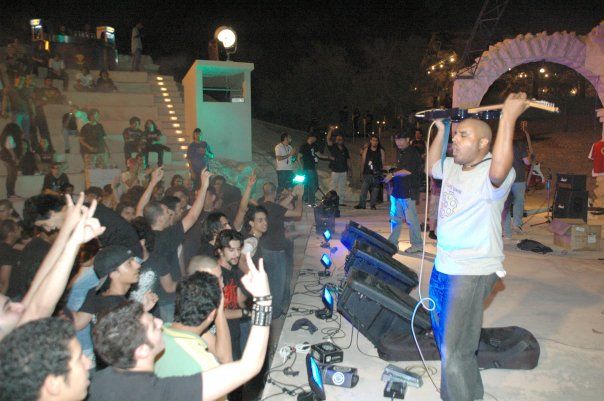
Sound of Ruby performing at a party in Riyadh, 2008. Courtesy of the band.
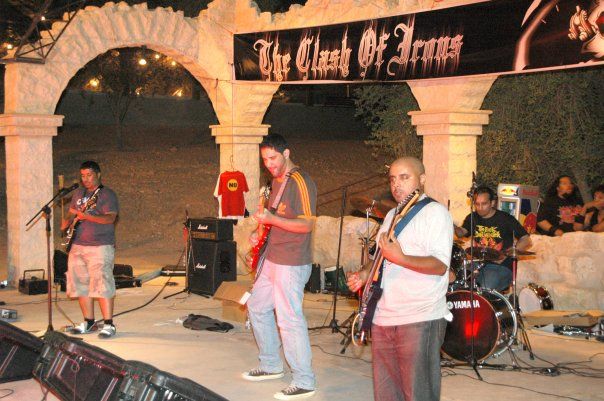
Sound of Ruby performing at a party in Riyadh, 2008. Courtesy of the band.
When asked about the story behind “Honey Boy Mustard”, Nader stood up and walked to their practice area to bring his mustard-colored guitar. “He loves honey mustard and we all secretly believe that’s all that he ever consumes,” Al-Hajjaj commented.
Besides being the lead guitarist in Sound of Ruby, Nader is a solo artist of his own and the musical genius behind the traditional Arabic musical sounds in some of the band’s songs, such as “Midnight” and “Jane Doe.”
“In every song I write, I always account for the part where Nader will add some of his Arabic melodies, or “Maqam” in Arabic, using just his guitar,” says Al-Hajjaj.
To describe how he makes the bagpipe sound, for instance, he picked up the guitar and started explaining: “First of all, I use the slide to tap on the cords. You know how Jeff Beck taps on the bridge pickup? I do the same except I tap on the middle pickup, shortening the length of the cord,” he said. “The sound of the bagpipe used to always play in my mind, and I’ve tried several times to replicate it on the guitar, and then one day, it finally worked when I did this technique.”
Sound of Ruby's “Midnight” is where Nader Al-Fassam, the band's lead guitarist, replicates the sound of the bagpipe using only his guitar (2:50 - 5:01).
“We faced a lot of obstacles getting out there and performing as a band in public places when we first started, due to the lack of support for musicians and music,” Al-Hajjaj said.
“At some point, we gave up trying to perform locally and, instead, joined the rock scenes in Bahrain and UAE where there was more acceptance.
“The music communities there helped give us a platform to perform and share our music. In turn, we encouraged them to create their own original work instead of only performing cover songs,” he added. “We were also active in the international scene as well. We would regularly perform at festivals and at some point, in 2010, we printed 2500 vinyl records that sold out quickly.”
Despite experiencing difficulties, the band deeply cared about having a community here at home. They would perform some of their shows locally with a select group of people. They loved having people come up to them before and after shows to express how much they’d inspired them to pick up a guitar or start their own musical careers. They would regularly give them advice on recording equipment and other musical topics as well.
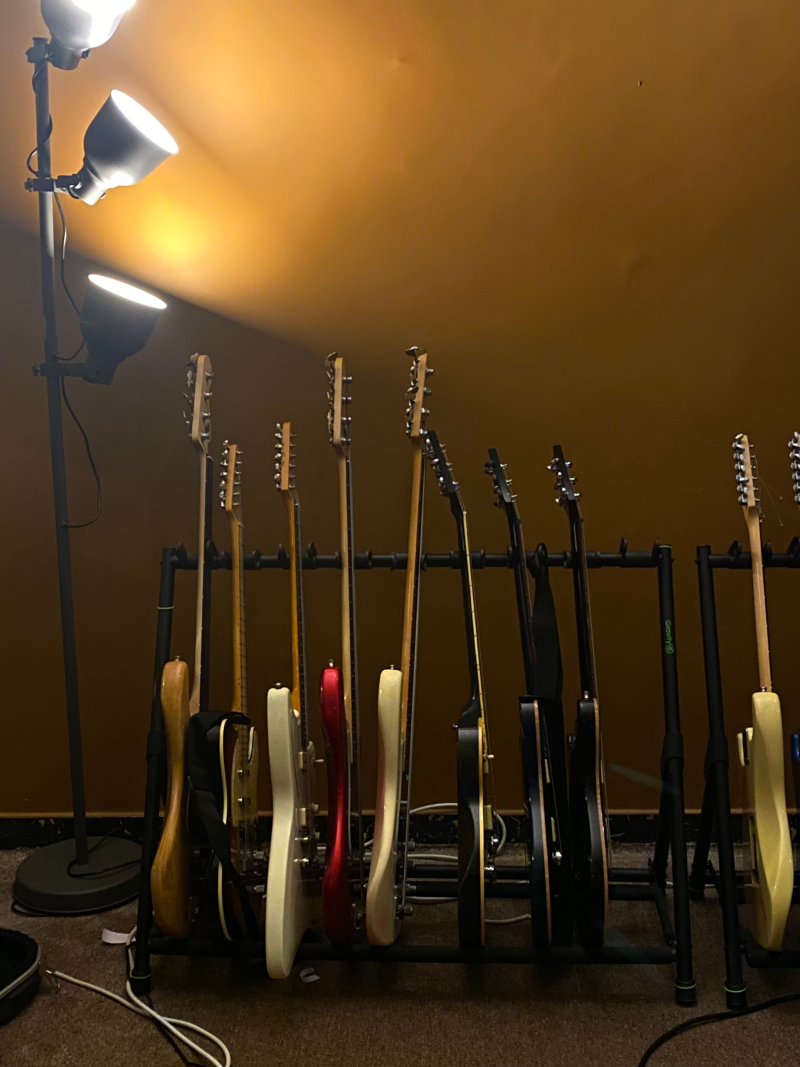
Sound of Ruby’s collection of guitars over the years.
“Aspiring young artists today are lucky to live in such a time where they get to freely explore their musical interests and easily find spaces and opportunities,” Al-Hajjaj said. “Even then, we neither regret nor resent our path. Starting on our own and learning how rock music worked by ourselves was an exciting adventure, and we’re proud to say that we have built a continuing legacy that lives on till this day.”

Sound of Ruby’s 2022 album cover, “Rock Puffs.” Courtesy of the band.

Sound of Ruby’s 2014 album cover, “Serotonin.” Courtesy of the band.
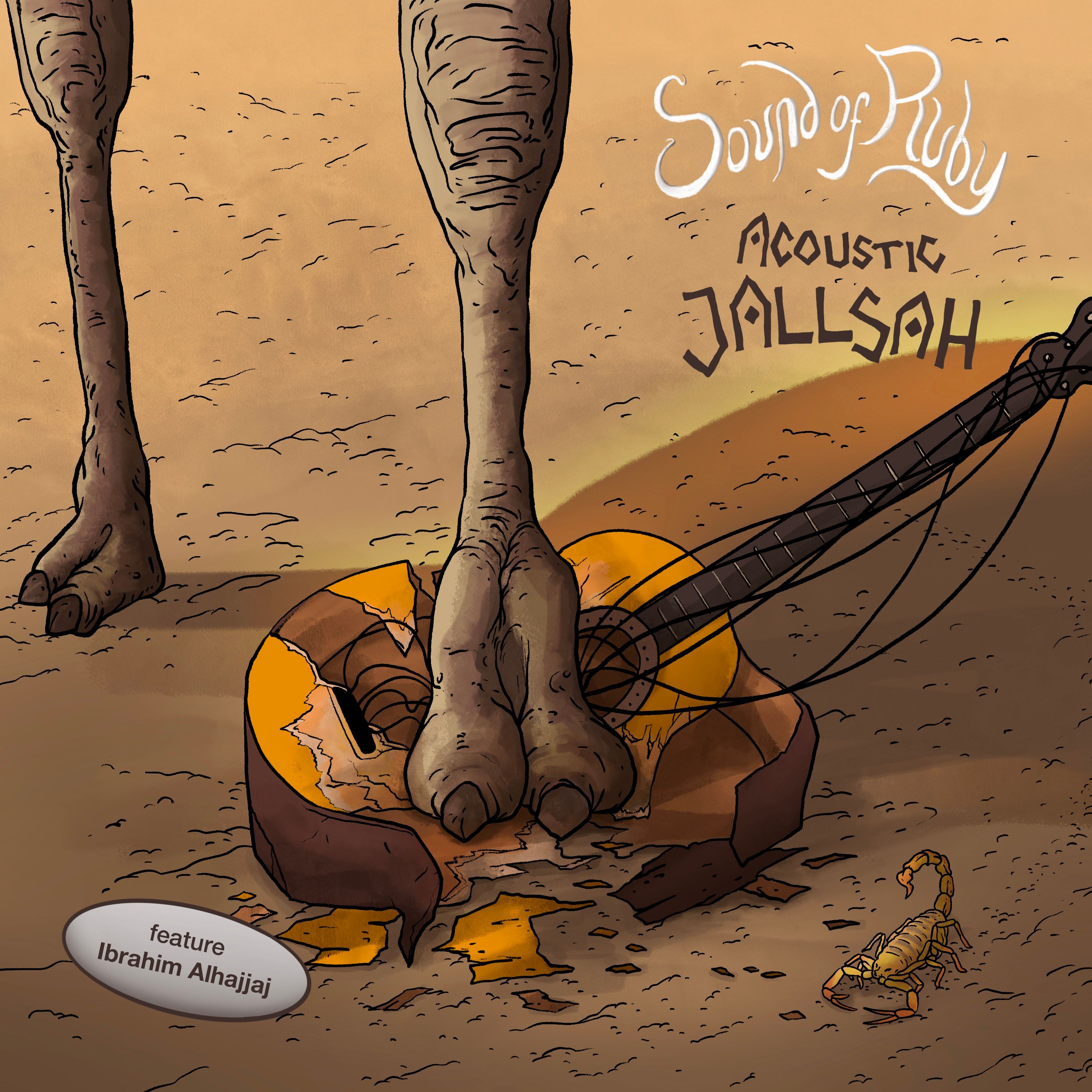
Sound of Ruby’s 2011 album cover, “Acoustic Jallsah.” Courtesy of the band.
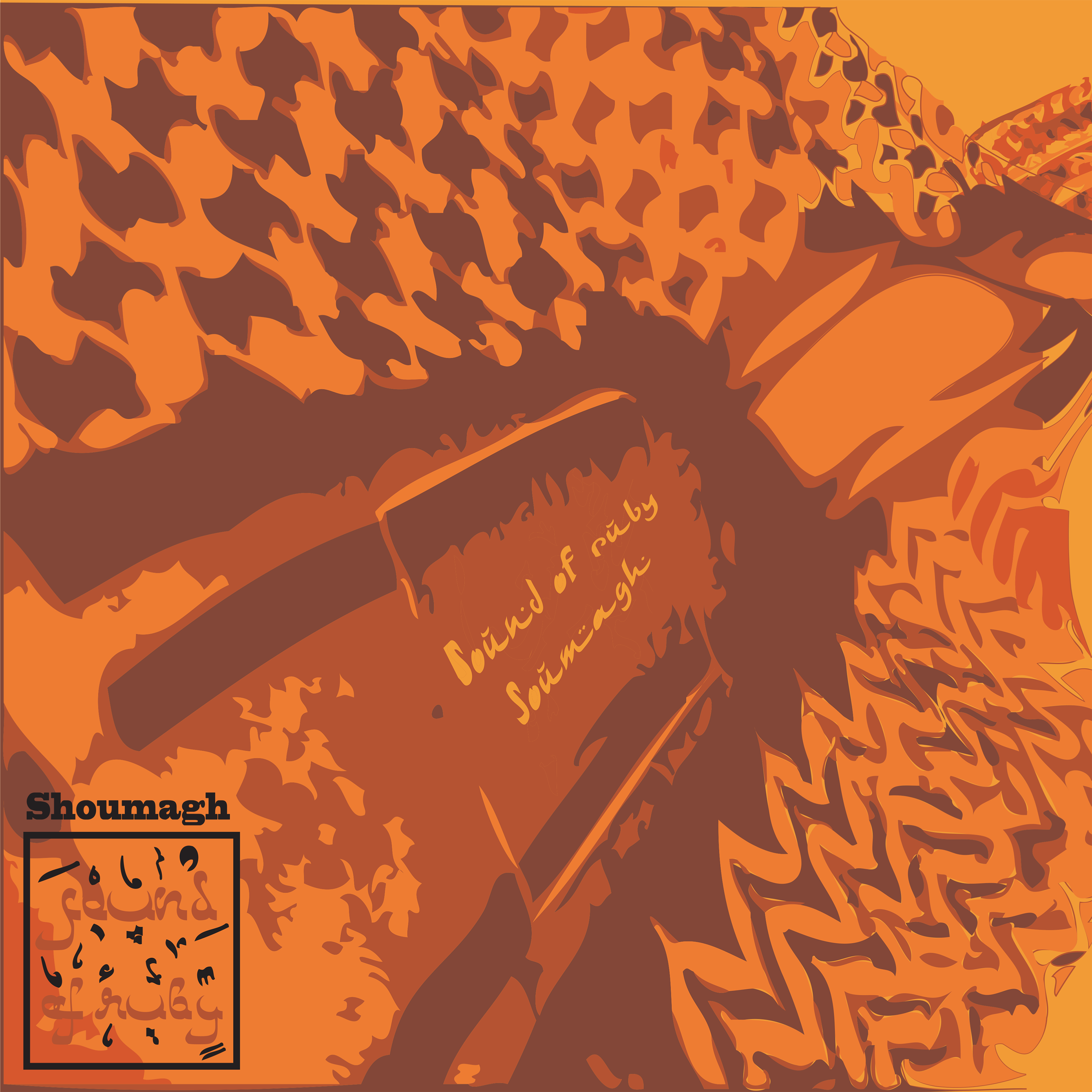
Sound of Ruby’s 2010 album cover, “Shoumagh.” Courtesy of the band.

Sound of Ruby’s 2008 album cover, “Desert Cooler.” Courtesy of the band.

Sound of Ruby’s 2007 album cover, “Chaos.” Courtesy of the band.
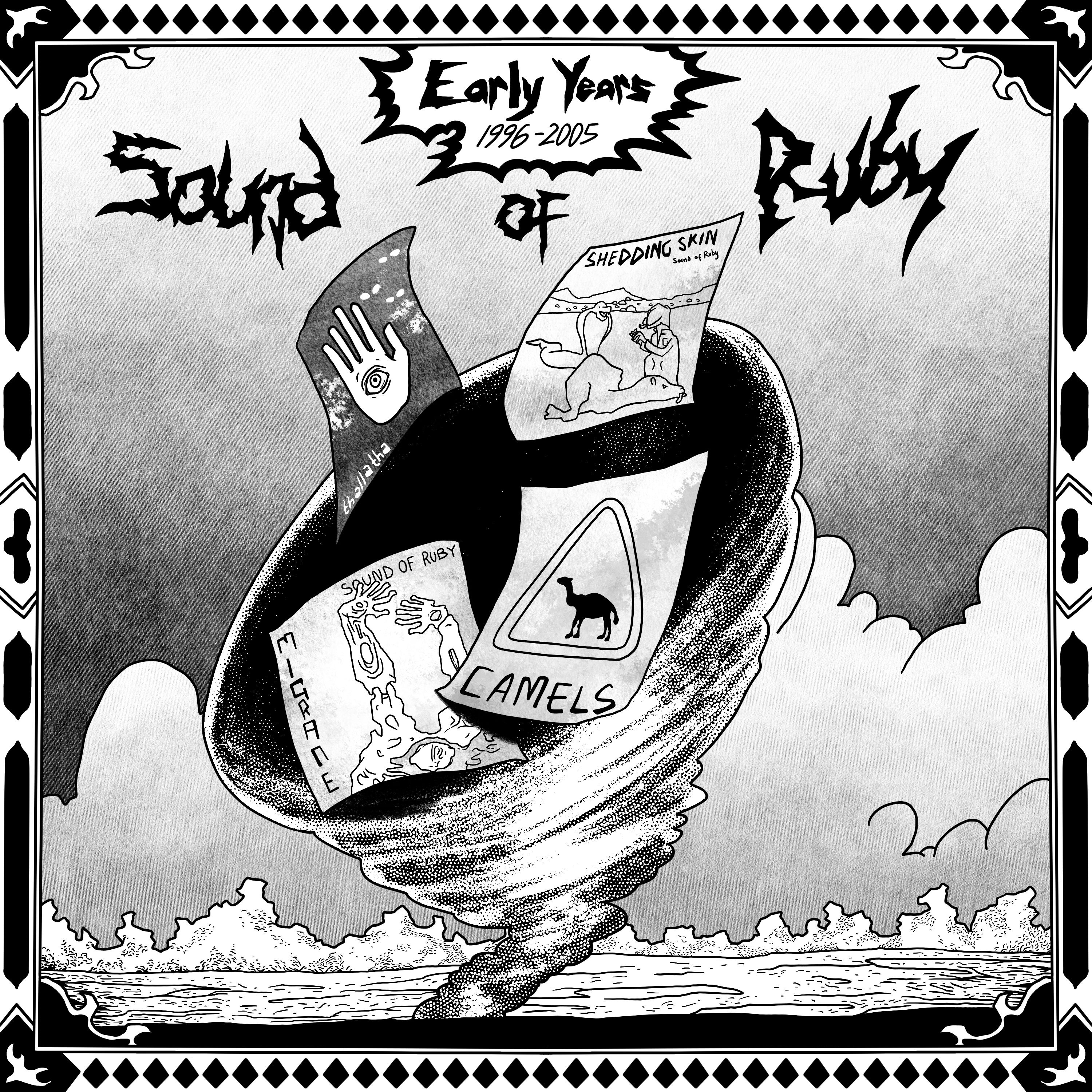
Sound of Ruby’s 2005 album cover, “Early Years 1996 - 2005.” Courtesy of the band.


